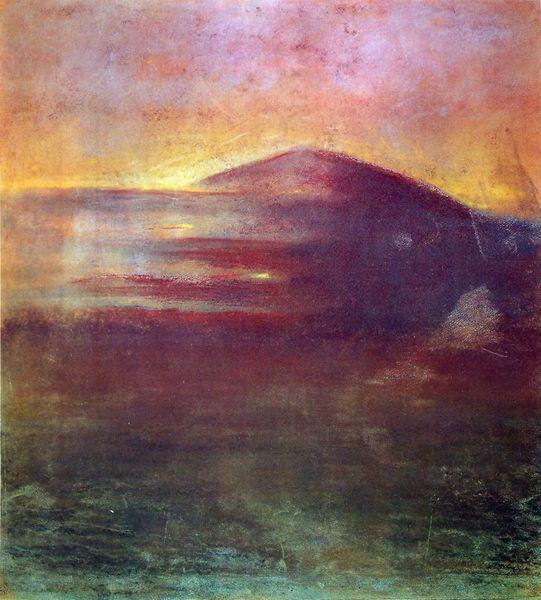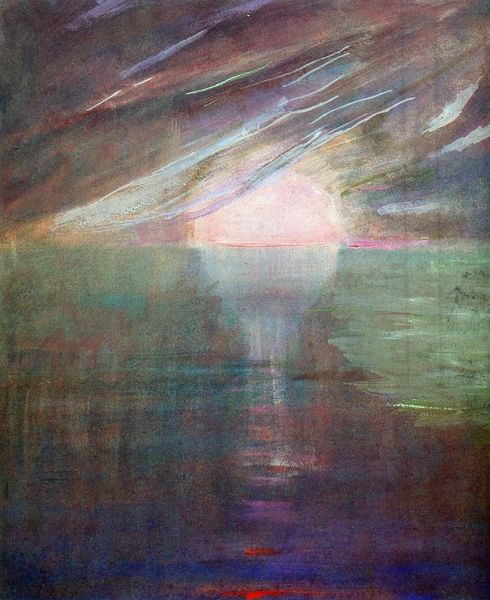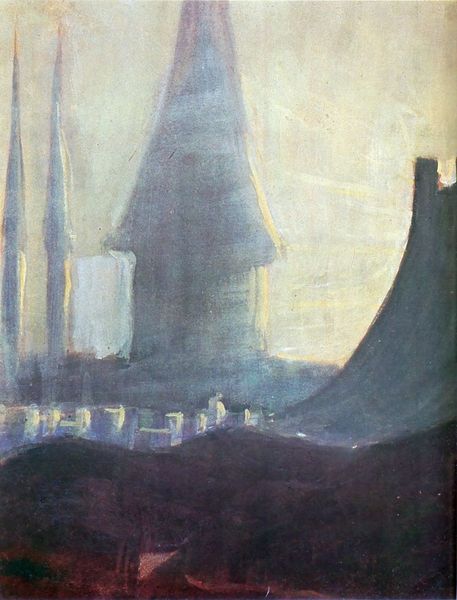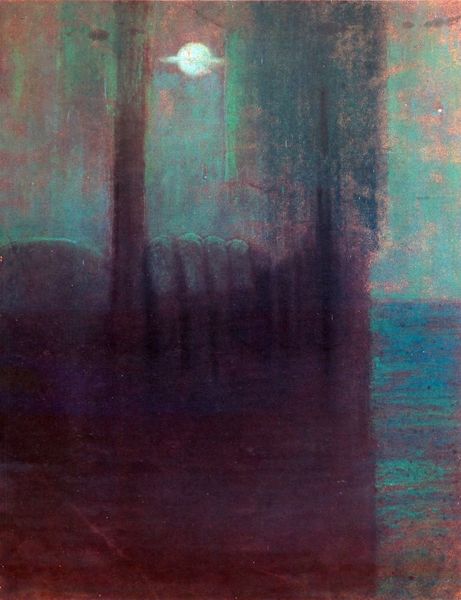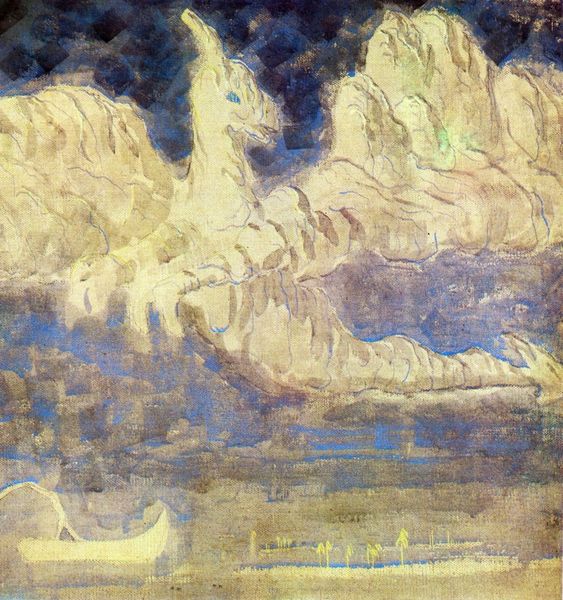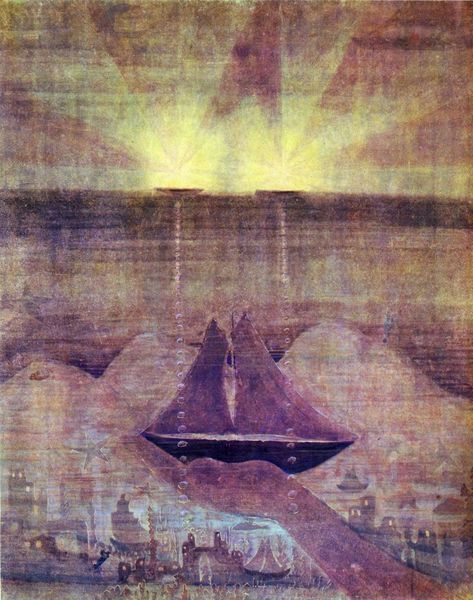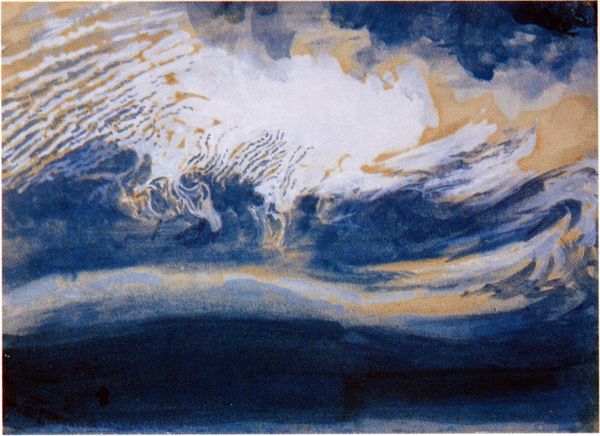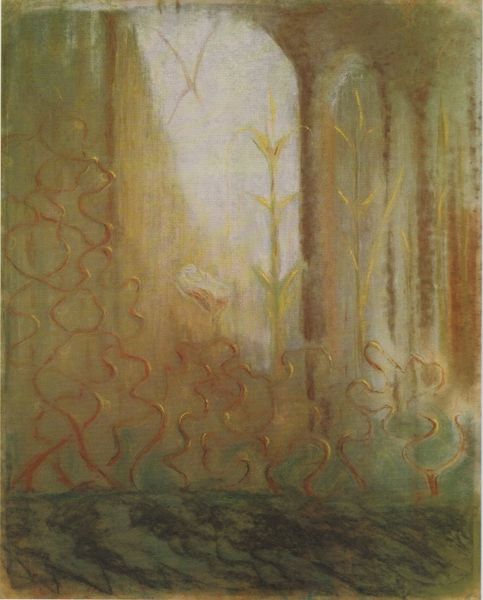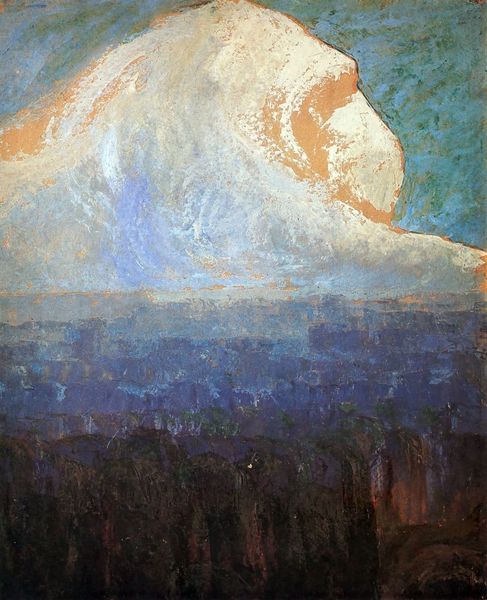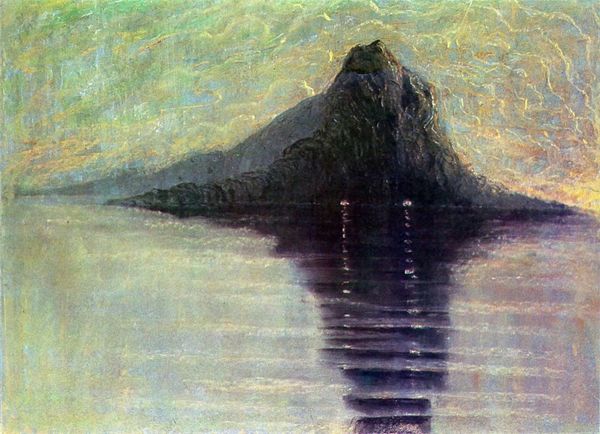
Copyright: Public domain
Curator: What strikes me immediately about Mikalojus Konstantinas Ciurlionis’s "Ship", painted in 1906, is the palpable sense of foreboding. It’s like a visual representation of impending doom. Editor: Absolutely, a very interesting claim considering its historical context, because at that time there was great revolutionary excitement brewing against the Russian Empire in Lithuania, and many felt this to be a turning point, even though Lithuania wouldn't gain independence for some years later. The ship in the painting seems a very blunt, clear symbol for something larger than itself; it speaks to both this internal political turmoil and a more broadly metaphysical sense of change and even dread. Curator: Yes, the heavy impasto of the waves adds to that emotional charge. Notice how the turquoise paint seems to churn and threaten, each crest a miniature claw reaching toward the dark ship. The formal structure itself contributes to this feeling. The ship is not sailing; it's looming. It fills up nearly a third of the visual space, so it gives off a massive sense of the claustrophobia felt during that historical period. Editor: And even then, the Symbolist movement heavily informed his style, particularly in using these more subtle applications of oil paint as fresco or perhaps distemper; the murky palette also heightens this atmosphere. It invites an unsettling sensation because it leaves some ambiguity as to how it was made and to what specific historical moment the ship might refer. The ship in that case may very well refer back to much earlier times, centuries before his. Curator: Precisely. Ciurlionis masterfully blends historical anxieties with a formal vocabulary. The color choices aren't simply descriptive; they actively construct an emotional landscape—a psychological space reflecting Lithuania’s struggles for autonomy within a rapidly changing Europe, particularly as it faced Russia to its east and the more organized Germans to the West. This ship represents the challenges it faced navigating uncharted and violent waters. Editor: And through an analysis of color, brushstroke, and form, we find echoes of Lithuania's fight to distinguish itself. That simple vertical mass acts as both ship and metaphor for resistance and change, yet the specific way the oil is painted lends it a very mysterious feel, echoing into ages long, long before his. Curator: Thank you, this reminds us to be both grounded and to never let go of our ambitions. Editor: True, this painting's use of abstract means also reminds us that we never really know all that history holds in store for us.
Comments
No comments
Be the first to comment and join the conversation on the ultimate creative platform.
